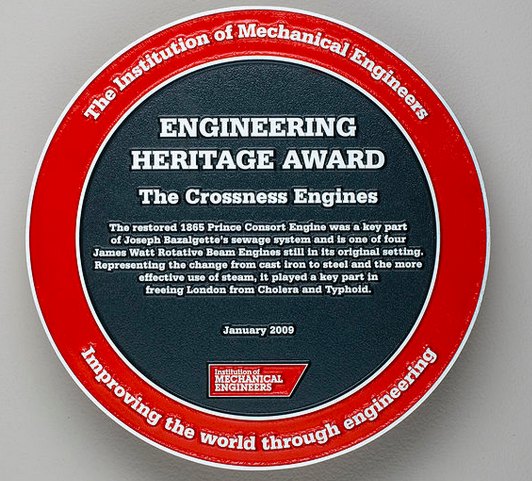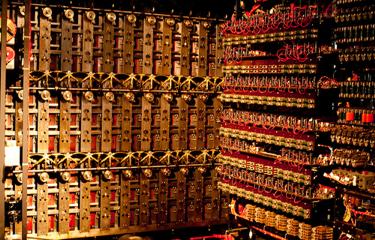| Turing's Bombe Tops Poll |
| Written by Historian | |||
| Wednesday, 08 October 2014 | |||
|
The Bombe has been voted the favorite recipient of the UK's Engineering Heritage Awards narrowly beating Concorde which came second. The Institution of Mechanical Engineers initiated its awards program, to identify and promote artifacts, locations, collections and landmarks of significant engineering importance in 1984. Originally called the Engineering Heritage Hallmark Scheme, it has already awarded plaques to ninety recipients and is about to present the 100th at a ceremony on October 10th to the Old Furnace in Coalbrookdale in Shropshire in recognition of it being the birthplace of the Industrial Revolution.
To mark both this milestone and the scheme's 30th anniversary, the IMechE invited its 105,000 members to vote for their favorite among the previous 99 recipients. Top of the poll, with over 19% of the vote, was the Bombe, closely followed by Concorde with almost 17%, the Rolls Royce RB211 engine was in third place with 11% and the Mallard locomotive was in fourth place with 10%. The Bombe was an electromechanical device designed to help crack the German Enigma code during the Second World War. It was the the brainchild of mathematicians and codebreakers Alan Turing and Gordon Welchman, who then passed on their concept for design and construction to Harold Keen, an engineer at the British Tabulating Machine Company. The machines allowed up to 5,000 messages a day to be decoded, a feat that is now considered pivotal to the Allied Forces winning the war. All of the 210 Bombes built by the British Tabulating Machine Company during World War Two were dismantled after the war but a fully-functioning replica, on display at Bletchley Park, was completed in 2007. The replica was rebuilt over the course of 13 years by a group of enthusiasts, lead by John Harper, using the original blueprints. The original Engineering Heritage Award was presented to the replica Bombe in 2009 to honor Turing, Welchman and Keen and also in recognition of the: "fantastic work of enthusiasts who rebuilt the Bombe with such care and passion.”
Commenting on the result, John Wood, Chairman of the Institution of Mechanical Engineers’ Heritage Committee, said: “The 210 Bombes built by the British Tabulating Machine Company during World War Two played a crucial role in the Allied success in the war. Estimates suggest that they could have helped cut the war by as much as two years – saving countless lives. These machines, which each weighed about a ton, illustrate the genius of Alan Turing and Gordon Welchman, but also the vision and ingenuity of the engineer Harold Keen who made these concepts a reality." The replica Bombe is part of the codebreaking display at Bletchley Park, but if you plan a visit remember that the Colossus and Tunny Galleries are open daily next door at The National Museum of Computing, with the rest of TMNOC opening to the public on Thursday, Saturday and Sunday afternoons.
More InformationAlan Turing’s codebreaking machine voted engineers’ favourite artefact Related Articles
To be informed about new articles on I Programmer, install the I Programmer Toolbar, subscribe to the RSS feed, follow us on, Twitter, Facebook, Google+ or Linkedin, or sign up for our weekly newsletter.
Comments
or email your comment to: comments@i-programmer.info |
|||
| Last Updated ( Saturday, 23 June 2018 ) |



